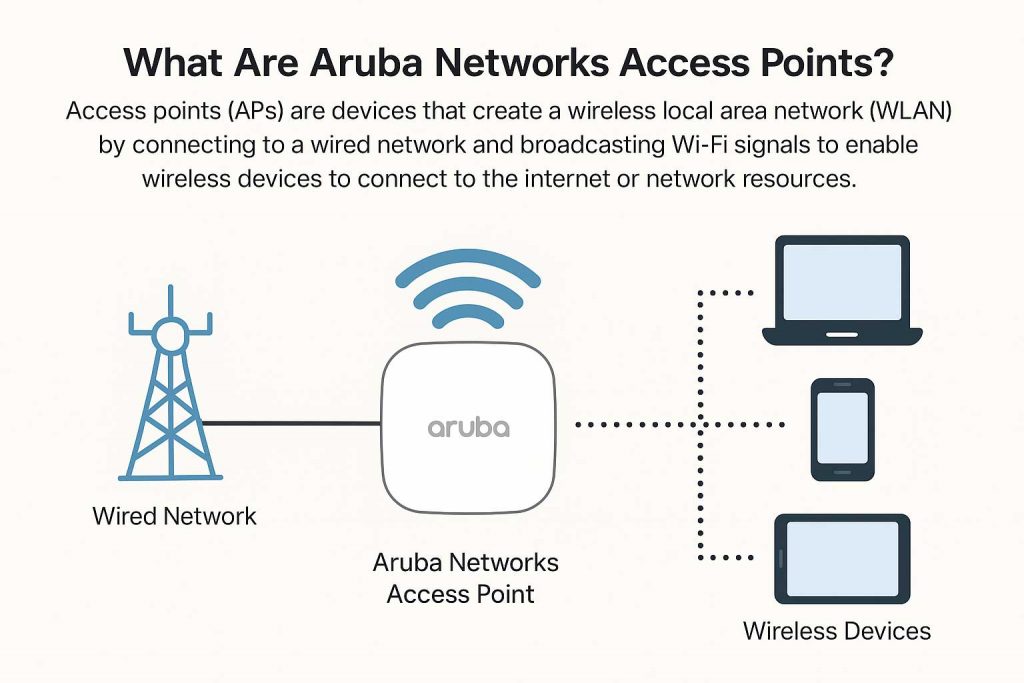Table of Contents
What Are Aruba Networks Access Points?
Access points (APs) are devices that create a wireless local area network (WLAN) by connecting to a wired network and broadcasting Wi-Fi signals to enable wireless devices to connect to the internet or network resources. Aruba Networks Access Points are renowned for their reliability and performance, catering to various environments from small offices to large enterprises.

Key Features of Aruba Access Points
- User-Friendly Management Interfaces: Aruba APs offer intuitive management through platforms like Aruba Central, allowing users to monitor and control their network with ease.
- Built-In Security Features: They incorporate advanced security protocols, including WPA3 and Enhanced Open, to protect against unauthorized access and ensure data integrity.
- Support for Latest Wi-Fi Standards: Aruba’s APs support Wi-Fi 6 and Wi-Fi 6E, providing faster speeds, increased capacity, and improved performance in dense environments.
- Scalability: Designed to grow with your needs, Aruba APs can be easily added to expand coverage and capacity without significant infrastructure changes.
Choosing the Right Aruba Access Point for Your Needs
When selecting an Aruba Access Point, consider the following factors:
- Size of Your Space: Larger areas may require APs with higher range capabilities or multiple units to ensure full coverage.
- Number of Devices: Environments with numerous connected devices benefit from APs that can handle higher client densities without performance degradation.
- Specific Use Cases: For instance, high-bandwidth activities like video conferencing or gaming demand APs with superior throughput.
Aruba offers a variety of models tailored to different needs. For example, the Aruba Instant On AP22 is ideal for small businesses requiring Wi-Fi 6 capabilities, while the Aruba 500 Series suits medium to large enterprises with high-performance demands.
Setting Up Your Aruba Access Point: A Step-by-Step Guide
- Unboxing and Components: Ensure all components are present, including the AP unit, power adapter (if not using Power over Ethernet), and mounting accessories.
- Physical Installation: Mount the AP on a ceiling or wall for optimal coverage, following the included guidelines.
- Powering the Device: Connect the AP to a power source using the adapter or a PoE-capable switch.
- Connecting to the Network: Use an Ethernet cable to link the AP to your network router or switch.
- Initial Configuration:
- Download the Aruba Instant On mobile app or access the web portal.
- Create an account and follow the prompts to detect and add your AP.
- Set up your Wi-Fi network name (SSID) and password.
- Finalizing Setup: Apply settings and allow the AP to reboot if necessary. Your network is now ready for use.
Troubleshooting Common Issues
- Connectivity Problems: Ensure the AP is within range of connected devices and there are minimal physical obstructions. Verify that the AP is properly powered and connected to the network.
- Performance Issues: Check for firmware updates through the management interface, as updates can resolve known issues and improve performance.
- Seeking Assistance: If problems persist, consult Aruba’s support resources or contact their customer service for further help.

















Comments